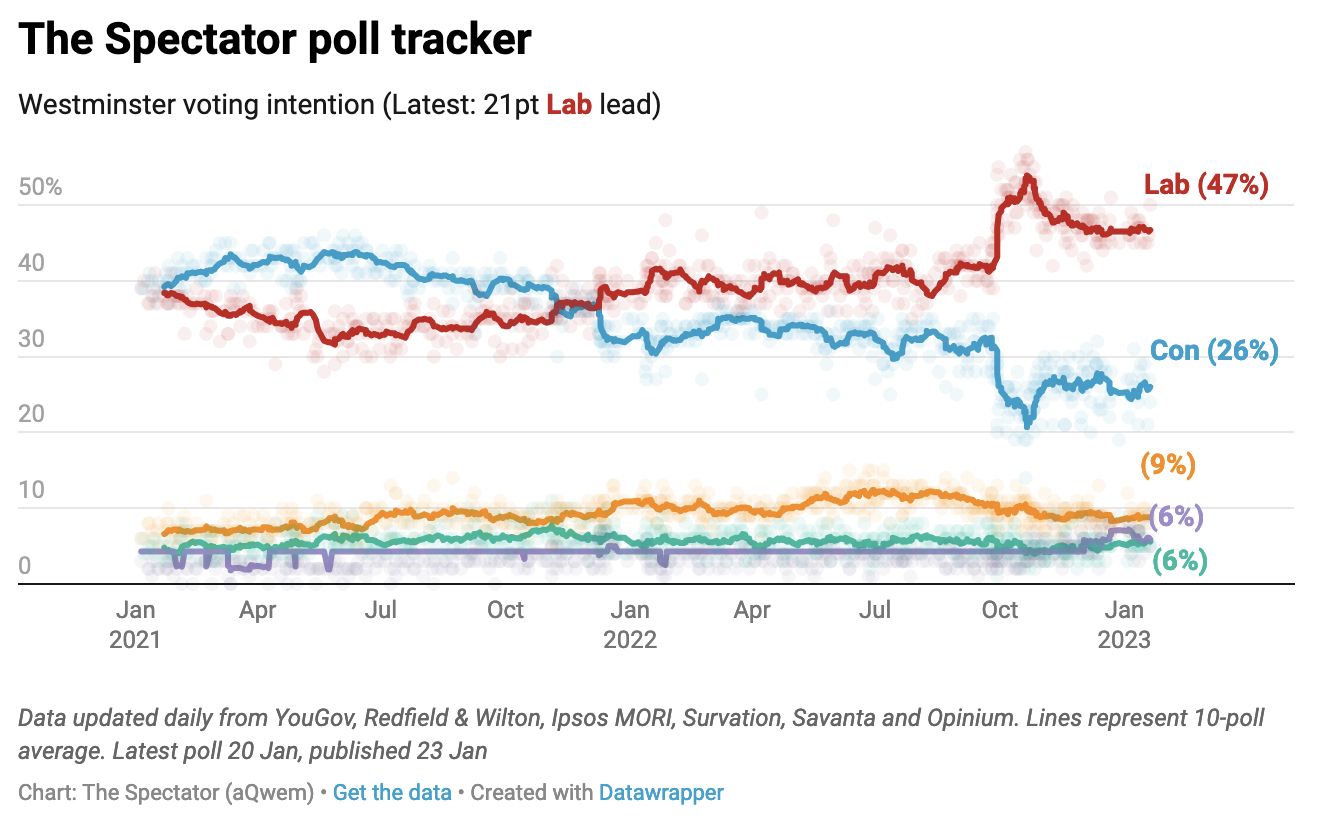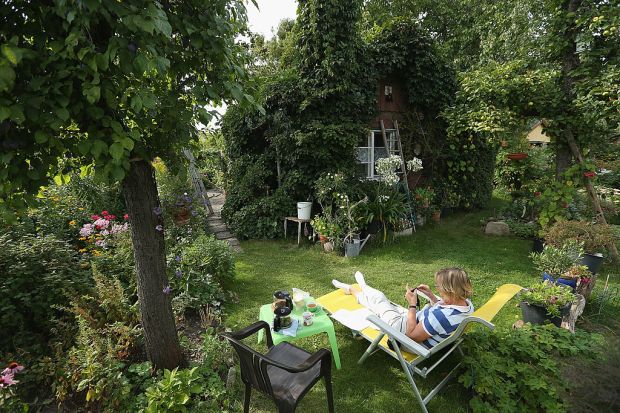This weekend, the Liberal Democrats announced that they are mounting a ‘blue wall’ offensive, a campaign aimed at affluent voters in Tory-held seats located in the south of England. The theme of this campaign will be the Tories’ handling of the NHS, which the Lib Dems have done local polling on and discovered might be a vote winner in these areas. ‘Might be’ is key here because if you look at nationwide polling, you have to wonder how many seats the Lib Dems are actually capable of winning, even if the Conservatives do fall apart before the next general election.
Rishi Sunak hasn’t turned the polls around for the Tories – at least, not yet. The Prime Minister’s party appears to be stuck somewhere in the mid-20s, with Labour polling in the high-40s, even cracking 50 per cent on occasion. Meanwhile, the Liberal Democrat numbers stubbornly refuse to budge from their miserly position. The party hasn’t polled above 13 per cent since early September and is regularly between 8 and 10 per cent in nationwide polls. It’s worth asking, given the sharp swing in the polls against the Tories over the last year or so, why the Lib Dems aren’t doing better.

Part of it is a result of their strategy. Since Ed Davey became leader, the Lib Dems appear to have consciously aimed to be seen as a sort of ‘none of the above’ party. This is a move away from their identity as the anti-Brexit bunch. To some extent this is understandable. While there is still a lot of anti-Brexit sentiment around, and the party would have been in a strong position to exploit this, these voters are spread thinly across the country. Under first past the post, this is no good. You need to figure out where you can find concentrated clumps of voters who might vote for you. Being whatever you need to be in any given area is one way to achieve this.
The ‘none of the above’ strategy has worked well for the Lib Dems over the last year and a half. They have scored a string of by-election victories by being the ‘something for everybody’ party. Mostly this has seen them turn into Nimbys during these contests, posing as the party that will stop housebuilding, or indeed any development, within the area contested. This is something the Lib Dems continue to swear they are against at the national level.
Yet this might blow up in their faces come a general election, for several reasons. One is how well Labour are now doing. It would be better for the Liberal Democrats if Labour were in the high 30s while the Tories were in the low-30s to high-20s. In other words, if Labour were ahead, but not by much. If this were the case, the Lib Dems could press the argument that Labour can’t win outright and will need them to govern. They could then make the case that there are a host of seats that ‘only the Lib Dems can take’, and if Labour wants to reduce the number of Tory constituencies, they will require the Liberal Democrats to win in certain places.
With Labour on 50 per cent, that argument starts to look a lot weaker. Suddenly, scores of seats have come into play for the Labour party that it might not have previously considered. And leaving these seats for the Lib Dems comes with two massive risks for Labour. One is that, particularly with their national polling figures so weak, the Lib Dems simply won’t be able to beat the Tories in these seats. This has happened before in ‘progressive alliance’ style situations – the smaller party that everyone gets out of the way for doesn’t turn out to be strong enough to win in the end.
The second risk is that if the Lib Dems get a decent number of seats and we end up with a hung parliament with Labour as the largest party, this places Keir Starmer in a difficult position. The Lib Dems will want concessions on things he would be loath to adopt – changing to a PR voting system, for instance. For these reasons, Labour might well decide that they have to fight tooth and nail for every seat, effectively steamrollering the Lib Dems in the process.
The Lib Dems ‘none of the above’ strategy has worked for now. At some point though, they are going to have to figure out what they stand for and what they don’t. They might want to wait until after the next general election before embarking on this exercise – but the polls suggest they should think about it a lot sooner than that.
Got something to add? Join the discussion and comment below.
Get 10 issues for just $10
Subscribe to The Spectator Australia today for the next 10 magazine issues, plus full online access, for just $10.




















Comments
Don't miss out
Join the conversation with other Spectator Australia readers. Subscribe to leave a comment.
SUBSCRIBEAlready a subscriber? Log in